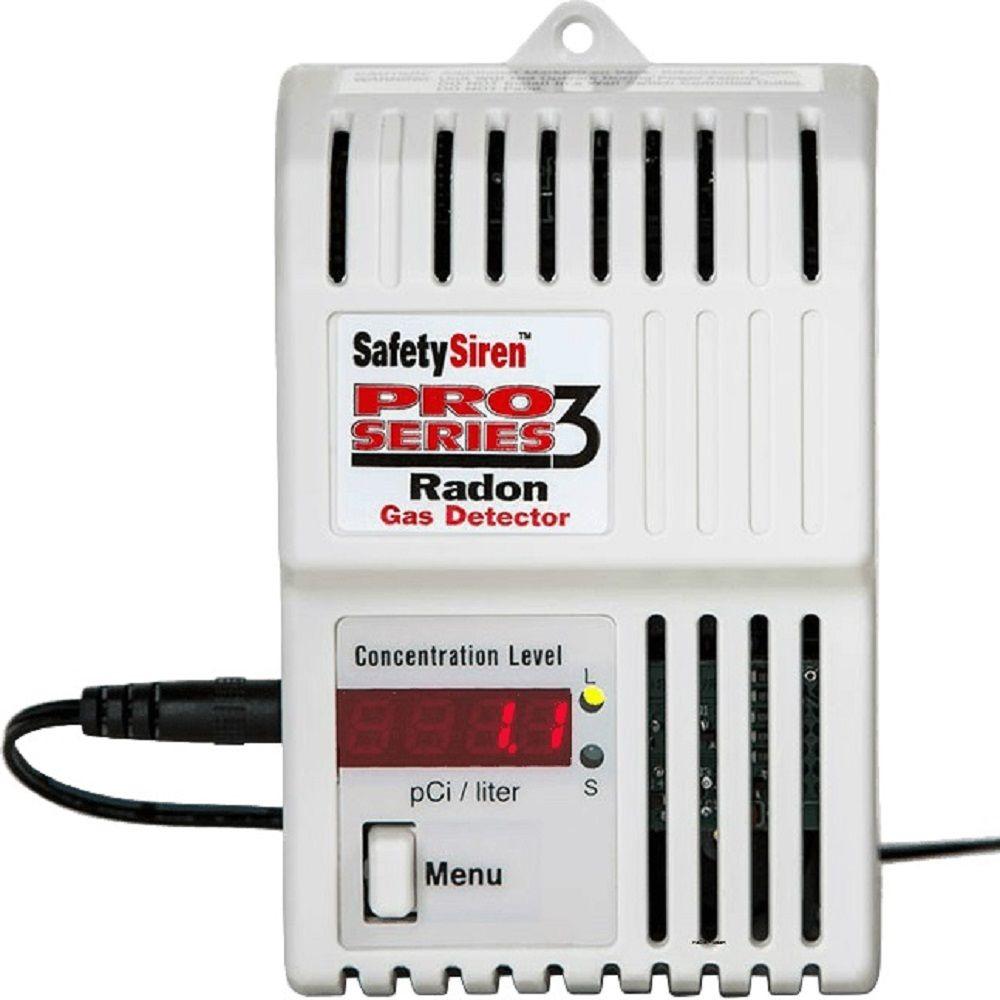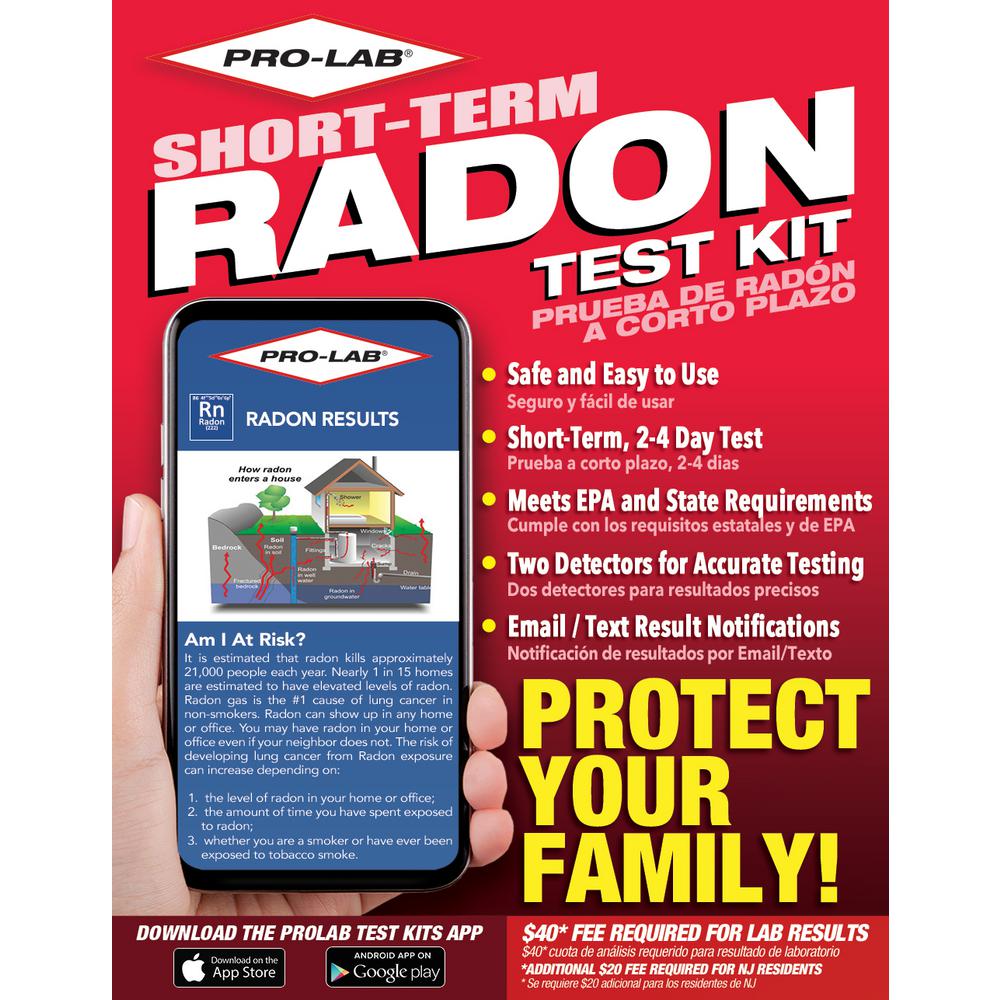The first battery-operated smart indoor air quality monitor with Radon detection, consisting of sensors for temperature, atmospheric pressure, humidity, VOCs, as well as CARBON DIOXIDE. Picocuries per liter of air, or pCi/L, which is among the preferred measurements for the speed of decay in radon, is equal to one trillionth of a curie, abbreviated as pCi. Due to the fact that it is needed by federal law, the pCi device is made use of in the United States.
Is radon something to worry about?
The average home has about 1.3 pCi/L of radon. Such levels aren't enough to worry about, but under the right conditions, they could make you sick. According to the EPA, a nonsmoker who was exposed to average levels of radon for a lifetime would have a 1 in 500 risk of developing lung cancer.
Radon breaks down right into solid radioactive components called radon kids (such as lead-214, polonium-218, and also polonium-214). Radon progeny can attach to dirt and also various other bits and can be infused the lungs. As radon as well as radon progeny airborne break down, they produce radiation that can damage the DNA inside the body's cells. You can help in reducing your risk of cancer cells by making healthy and balanced choices like eating right, remaining energetic and not cigarette smoking.
How Tough Is It to Sell a Home with High Radon Degrees?
Is a radon level of 4 Safe?
Sometimes the seller pays for it all, sometimes they fund a credit and sometimes there is a split. Most single family homes will only require one radon mitigation system. A radon system installed by a high quality radon contractor will run in the range of $1200-$1700.
If your house has a boundary structure drain (French Drainpipe), the vent pipe can be attached to the drain, taking care not to hinder water drain or sump pump function. Contact your State Radon Program to determine what are, or whether there are, demands related to supplying radon dimension and also or radon mitigations/reductions in your State.
Can you smell radon?
The “safe” level of radon exposure is no radon at all. The EPA's recommended level for radon mitigation is 4.0 pCi/L or above. It's estimated that 1 in 15 American homes have an elevated level of radon gas.
How do I make my house safe from radon?
Install a layer of gas-permeable aggregate, such as four inches of gravel, beneath the slab or flooring system of your home if you don't have a crawlspace. Cover this layer or your crawlspace floor with plastic sheeting to stop radon gas from moving past that level and into your home.
It's additionally crucial to adhere to suggested testing guidelines, which can assist identify particular cancers early.

To learn more on exactly how radon can affect your health, see our frequently asked concerns concerning the health risks of radon. Radon is a radioactive product of the radioactive decay of uranium in the soil. It obtains sucked into frameworks by the all-natural vacuum structures produce on the soil (thermal pile impact). This can expose you to the unsafe radon decay items (Alpha bits) that can cause lung cancer cells.
Can I install my own radon mitigation system?
In most cases, pros charge about $1,500 to install a radon mitigation system, but you can do it yourself for only about $500 in materials. So if you're fairly handy and have some carpentry, plumbing and electrical skills, you can install your own system in a weekend and save yourself a thousand bucks!
Does seller have to fix radon?
It's very likely that your future buyer will make you fix the radon problem before they will purchase the home. It's good to just take care of it during your real estate deal. Sometimes the seller pays for it all, sometimes they fund a credit and sometimes there is a split.
How long does radon stay in the air?
It can be found in all 50 states. Once produced, radon moves through the ground to the air above. Some remains below the surface and dissolves in water that collects and flows under the ground's surface. Radon has a half-life of about four days - half of a given quantity of it breaks down every four days.
How common is radon in a home?
It's common: About 1 in every 15 homes has what's considered an elevated radon level. The gas is odorless and invisible, says the EPA, and it causes no immediate symptoms, so the only way to know if your home is affected is by testing your individual residence.
- The World Health and wellness Company suggest that a house be minimized when its confirmed radon level is 2.7 pCi/L or above.
- This alternative allows total dangers from direct exposure to radon, both with air and water, to be decreased.
- High degrees of radon in residences can be effectively remediated by sealing such entrance factors https://sketchfab.com/essokeswxw and also by installing appropriate ventilation.
- If you have checked the air in your home as well as found a radon problem, as well as your water originates from a well, have your water evaluated.
- The systems develop constant vacuum cleaner in the soil under basements, concrete pieces and crawlspaces.
Is radon heavier than air?
Radon gas is approximately 7.5 times heavier than air. It is however a noble gas with no chemical affinity but is easily influenced by air movements and pressure. In a house with forced air heating and cooling, radon gas can easily be distributed throughout the entire dwelling.
What kind of cancer is caused by radon?
Radon decays quickly, giving off tiny radioactive particles. When inhaled, these radioactive particles can damage the cells that line the lung. Long-term exposure to radon can lead to lung cancer, the only cancer proven to be associated with inhaling radon.
Should I buy a house with high radon?
EPA RECOMMENDS: If you are buying or selling a home, have it tested for radon. For a new home, ask if radon-resistant construction features were used and if the home has been tested. Fix the home if the radon level is 4 picocuries per liter (pCi/L) or higher.
Is a radon level of 5 bad?
Safe radon levels. The best radon level measurement would be zero. The average global outdoor radon level varies between 5-15 Bq/m3, equal to 0.135-0.405 pCi/L. For every 99.9 Bq/m3, or every 2.7 pCI/L increase in long term radon exposure, lung cancer risk rises 16 percent.
Who is most at risk of lung cancer?
The more uranium there is, the more radon there is. That makes radon the second leading cause of lung cancer after smoking. But even minor symptoms like headaches, feeling unusually tired, itching or burning eyes, irritated skin, nasal congestion, a dry throat or nausea could be due to your home's indoor air quality.
What do you do if your house has radon?
Radon can seep into any home that is in contact with the ground. It is undetectable unless you perform a radon test. It is the second leading cause of lung cancer and according to the EPA and CDC, it kills more than 20,000 annually. It is not something you want in the home you are buying.
Is radon only in the basement?
Radon is completely odorless as well as being invisible. Because it is often found unexpectedly in basements, some people mistakenly believe that it only occurs in basements. Most commonly homes with basements are suspect for having higher radon levels.
How bad is a radon level of 8?
The EPA strongly recommends radon mitigation if your radon levels are above 4 pCi/L. While radon levels below 4 still pose a health risk. They recommend you consider mitigation if your radon levels are between 2 and 4 pCi/L. They are quick to point out that there is no known safe level of radon.
What causes radon?
Being exposed to radon for a long period of time can lead to lung cancer. Radon gas in the air breaks down into tiny radioactive elements (radon progeny) that can lodge in the lining of the lungs, where they can give off radiation. This radiation can damage lung cells and eventually lead to lung cancer.
How do you get rid of radon gas in a basement?
The radon fans are guaranteed by manufacturers for 3 – 5 years. Their replacement cost, including installation, is usually $300 to $600. Homeowners are aware that the fan must run continuously 24/7, year after year. The typical estimate of the electricity cost is $150 per year.
Does Radon make you tired?
The more uranium there is, the more radon there is. That makes radon the second leading cause of lung cancer after smoking. But even minor symptoms like headaches, feeling unusually tired, itching or burning eyes, irritated skin, nasal congestion, a dry throat or nausea could be due to your home's indoor air quality.

Do all homes have some level of radon?
The EPA estimates the lifetime risk of radon-induced lung cancer for never-smokers at 7 per 1,000 people, compared with 62 per 1,000 for smokers exposed to a level of 4 pCi/L. Your risk goes up with your exposure to radon and cigarette smoke over time.